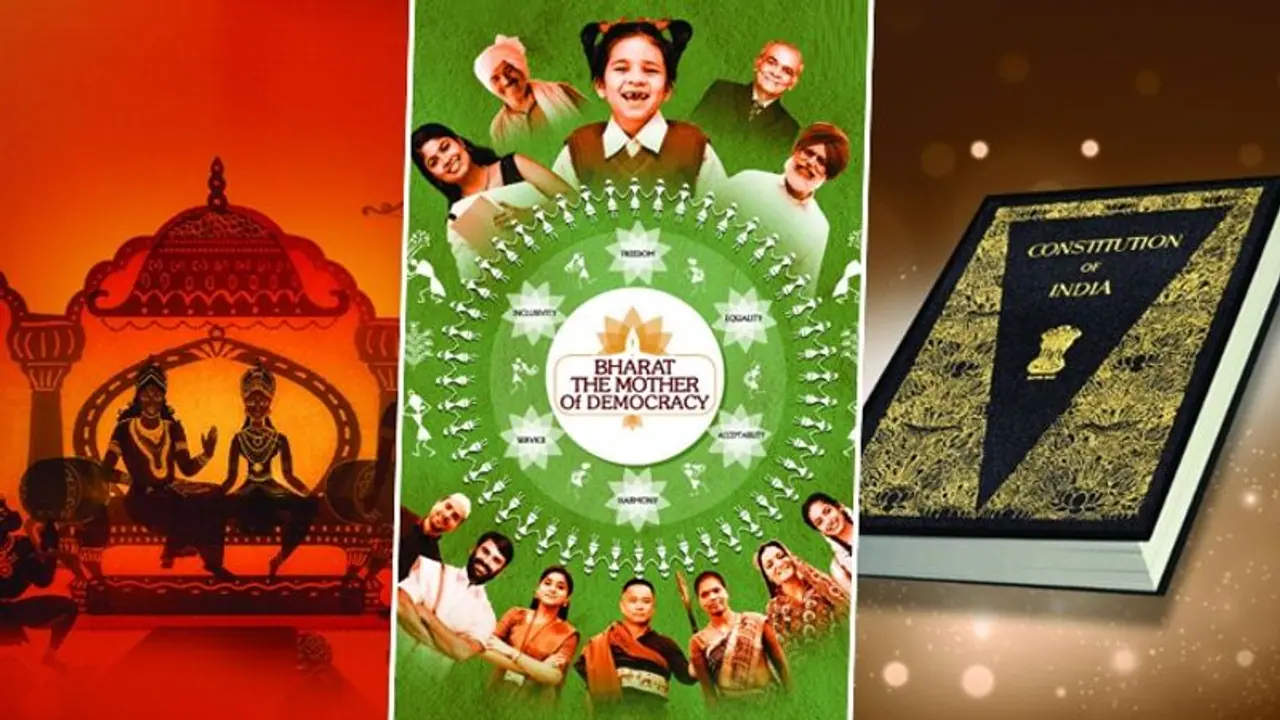At the just concluded G20 Summit 2023, world leaders were handed over two booklets 'Bharat, The Mother of Democracy' and 'Elections in India'. Here's a look at what these two booklets contain.
Even as controversy around India being renamed to 'Bharat' continues among opposition circles, a booklet titled 'Bharat, the Mother of Democracy', handed over to G20 Summit delegates has become a topic of discussion days after the grand event came to a conclusion. Two booklets, including one that delves into Indian elections' history titled 'Elections in India' were given to world leaders at the summit that took place on September 9-10 in New Delhi's Bharat Mandapam.

Here's a look at what the booklets showcased:
'Bharat, the Mother of Democracy'
The 52-page booklet, "Bharat: The Mother of Democracy," opens with a declaration that "Bharat" is the country's official name. It points out that this name is mentioned in the Indian Constitution and was discussed during the years 1946-48. This assertion came in the wake of a recent G20 dinner invitation that referred to Droupadi Murmu as the "President of Bharat," sparking controversy among opposition parties. It's important to note that both "Bharat" and "India" are official names, with one in Hindi and the other in English, as stated in Article 1 (1) of the Indian Constitution.
The booklet traces the democratic ethos in "Bharat" over thousands of years, dating back to 6,000 BCE and leading up to the adoption of the Indian constitution. “In Bharat, that is India, the view or the will of the people in governance has been the central part of life since earliest recorded history,” it states.
“According to Indian ethos, democracy comprises the values of harmony, freedom of choice, freedom to hold multiple ideas, acceptability, equality, governance for the welfare of the people and inclusivity in a society. All of these allow its common citizens to lead a dignified life," it added.
In the section discussing ancient texts like the Vedas and the Ramayana, the booklet highlights the frequent mention of terms like sabha (assembly of elders), samit (assembly of common folks)i, and sansad (parliament), indicating representative bodies.
In the section titled “The King, chosen by his people”, the booklet refers to the Ramayana as a “living guide in India and also in many parts of the world.”
“Ram-rajya – the rule of Lord Rama – is the epitome of an ideal government. In Ram-rajya, people live secure, prosperous lives knowing that their welfare is paramount to the ruler they have chosen," it reads.
Additionally, the Mahabharata is cited as exemplifying the idea of doing what is right for the people. “This is brought to life in the Mahabharata, the great epic of India.”
The booklet acknowledges the contributions of Jainism and Buddhism in promoting democratic principles such as coexistence and tolerance. It also recognizes the roles of Kautilya, Megasthenes, Ashoka, and Shivaji in shaping the democratic landscape of "Bharat."
Quoting from the Arthashastra, the booklet states that “[the] deep rooted value of serving, not ruling” is a democratic ideal that has always defined India.
In a chapter titled “The Power To Choose & To Change”, the booklet states that a ruler “rules not by birth right or coercion but by bowing to the will of the people.”
“This democratic principle is seen throughout India’s history.”
Historical references, including the Khalimpur Copperplate inscriptions and examples like King Gopala's election to replace an unfit ruler, are cited to illustrate this democratic principle. “There are numerous historical references of the people choosing their king. Rudradaman I, King Kharevala and even the pillar of Samudragupta of India’s golden Gupta era, at Prayagraj in Uttar Pradesh, mentions similar principles.”
The booklet points to the Vijayanagar empire, specifically Krishnadeva Raya's reign, as an exemplary case of responsive government, democratic ethos, and international trade linkages.
The section titled "The Understanding Monarch" praises Mughal emperor Akbar for his practice of inclusive administration, regardless of religion, which is described as a form of democracy ahead of its time.
The booklet lauds post-independence India as a pillar of global democracy, highlighting the numerous peaceful transfers of power through general elections, state elections, and local self-government elections. It also emphasizes the independence of the Election Commission of India, which oversees elections in the country.
It refers to the Election Commission, which is facing questions about its independence, as a “fiercely independent body.”
“Elections happened, and keep happening like clockwork. The Election Commission of India reports directly to the President. It is a fiercely independent body.”
'Elections in India'
The second booklet, "Elections in India," provides a comparative view of elections from 1951-52 to 2019 in 15 pages. The booklet states that since the first general election in 1951-52 which saw a 45.67 per cent voter turnout, the last general election in 2019 saw a voter turnout of 67.40 per cent.
It adds that while there were only 53 parties in the first general election, and that by 2019 there were 673.
The booklet notes that the time taken to conduct elections has significantly decreased over the years. In 1951-52, the electoral process spanned four months, including 17 polling days. However, in 2019, elections were completed within just seven polling days, from April 11 to May 19.
Over the past seven decades, both the number of security personnel deployed during elections and the total number of electors have seen a substantial rise.
While the booklet reports an increase in the number of female electors since the first general elections, it does not provide a breakdown of the number of women or third-gender candidates who have been elected. In 1951-52, there were 45 per cent female and 55 per cent male electors. By 2019, the ratio shifted to 48.09 per cent female, 51.9 per cent male, and an additional 39,075 third-gender electors.
This comprehensive analysis in the two booklets showcases India's rich democratic history, from ancient times to the present, and underscores its commitment to democratic values and processes.
